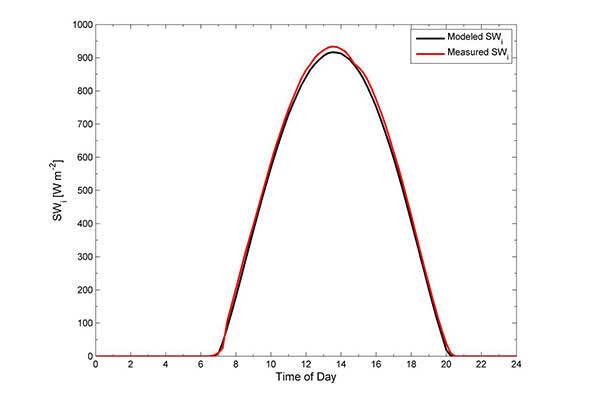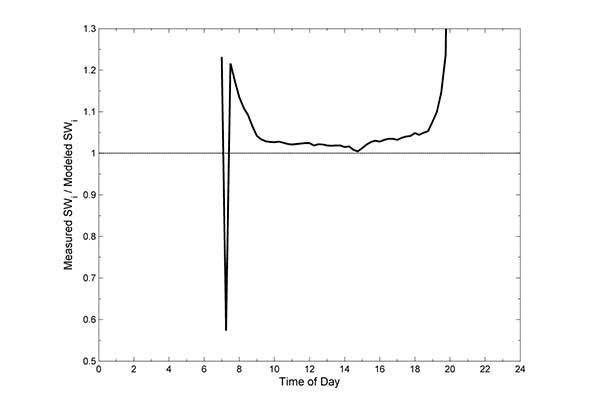Using the Clear Sky Calculator
In response to customer inquiries regarding recalibration requirements, in 2009 Apogee Instruments developed the Clear Sky Calculator, an online tool that can be used to estimate the intensity of solar radiation (either total global shortwave radiation, measured by pyranometers, or global photosynthetic photon flux density, measured by quantum sensors) incident on a horizontal surface at any time of the day, at any location in the world. The equations used to estimate clear sky solar radiation with the Clear Sky Calculator come from the clear sky solar radiation model used to calculate net radiation in the ASCE Standardized Reference Evapotranspiration Equation. The only input requirements to the calculator are site elevation, latitude, longitude, reference longitude, and air temperature and relative humidity measurements or estimates. These data are typically easy to obtain, making the Clear Sky Calculator a simple solar radiation reference that can be used to estimate pyranometer and quantum sensor accuracy and determine the need for recalibration.
When used near solar noon over multiple clear, unpolluted days during spring and summer months, accuracy of the Clear Sky Calculator is estimated to be ± 4 % in all climates and locations around the world. As an example, modeled incoming shortwave radiation (SWi) from the Clear Sky Calculator closely tracked measured SWi (data from a heated and ventilated Kipp & Zonen CM21 pyranometer) for a clear day (April 21, 2012) in Logan, Utah (Figure 1). The ratio of measured SWi to modeled SWi was between 1.00 and 1.05 (0 % and 5 %) from 9 A.M. to 6 P.M. (solar zenith angles less than 65°) (Figure 2). The average ratio from two hours before solar noon to two hours after solar noon was 1.02 ± 0.01 (2 ± 1 %). A more detailed discussion of Clear Sky Calculator accuracy is given here, where the necessary accuracy of the required inputs is discussed.
Apogee strongly encourages our customers to use the Clear Sky Calculator as an effective way to monitor pyranometer and quantum sensor performance and determine the need for sensor recalibration. If a sensor is consistently different from the Clear Sky Calculator by more than a few percent, please contact us about recalibration.

Figure 1: Comparison of measured incoming shortwave radiation (SWi) (red line) and modeled SWi on April 21, 2012 in Logan, Utah. Measured SWi is from a heated and ventilated blackbody pyranometer (Kipp & Zonen model CM21). Modeled SWi is from the Clear Sky Calculator.

Figure 2: Ratio of measured shortwave radiation (SWi) to modeled SWi over the course of a clear day (April 21, 2012) in Logan, Utah. Mean ratio = 1.02 & 0.01 (2 ± 1 %) for measurements averaged from two hours before solar noon to two hours after solar noon (solar noon occurred at approximately 13.5). The dip in the morning near 7 is due to mountains on the east side of the valley where Logan is located.
